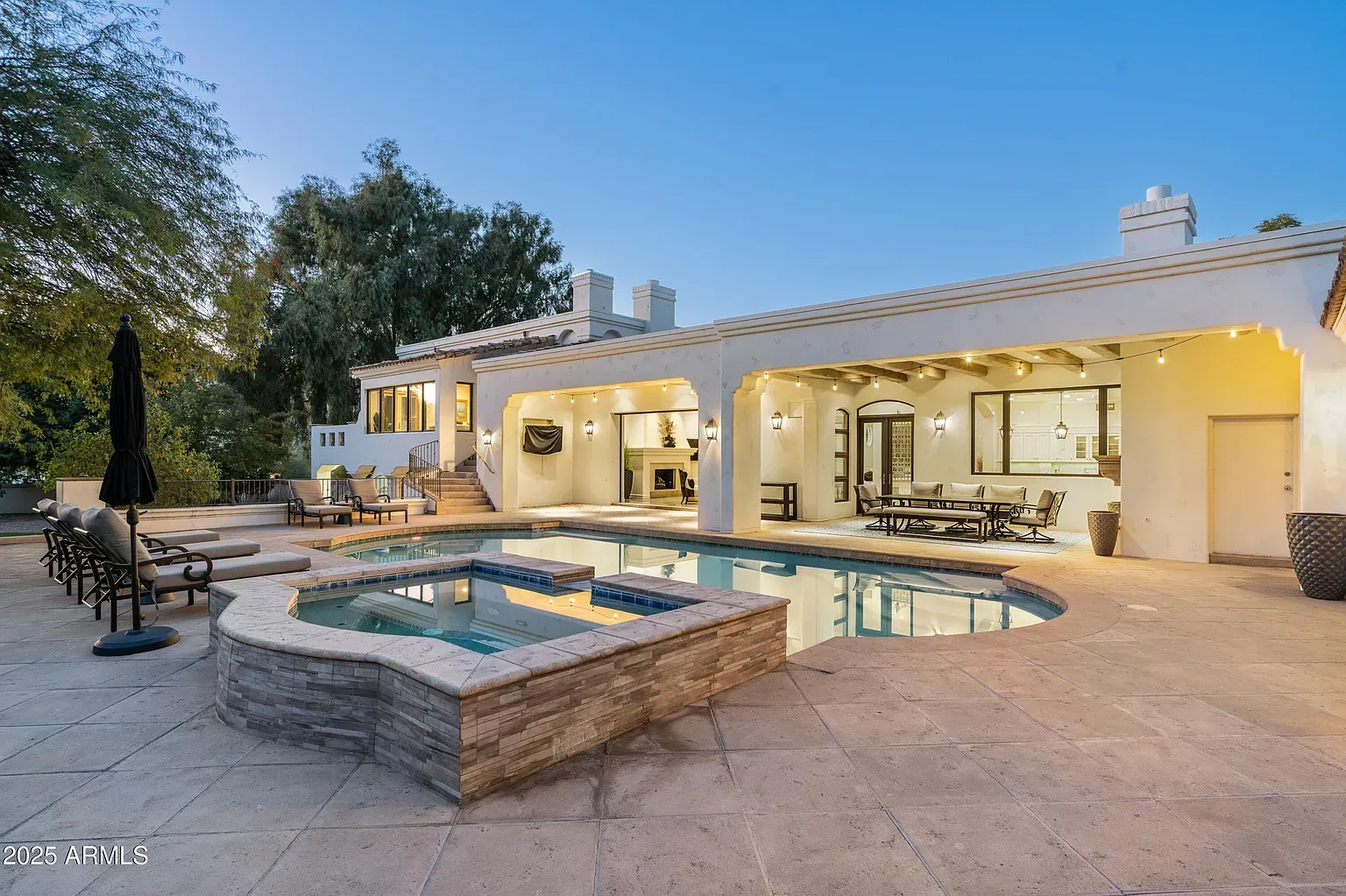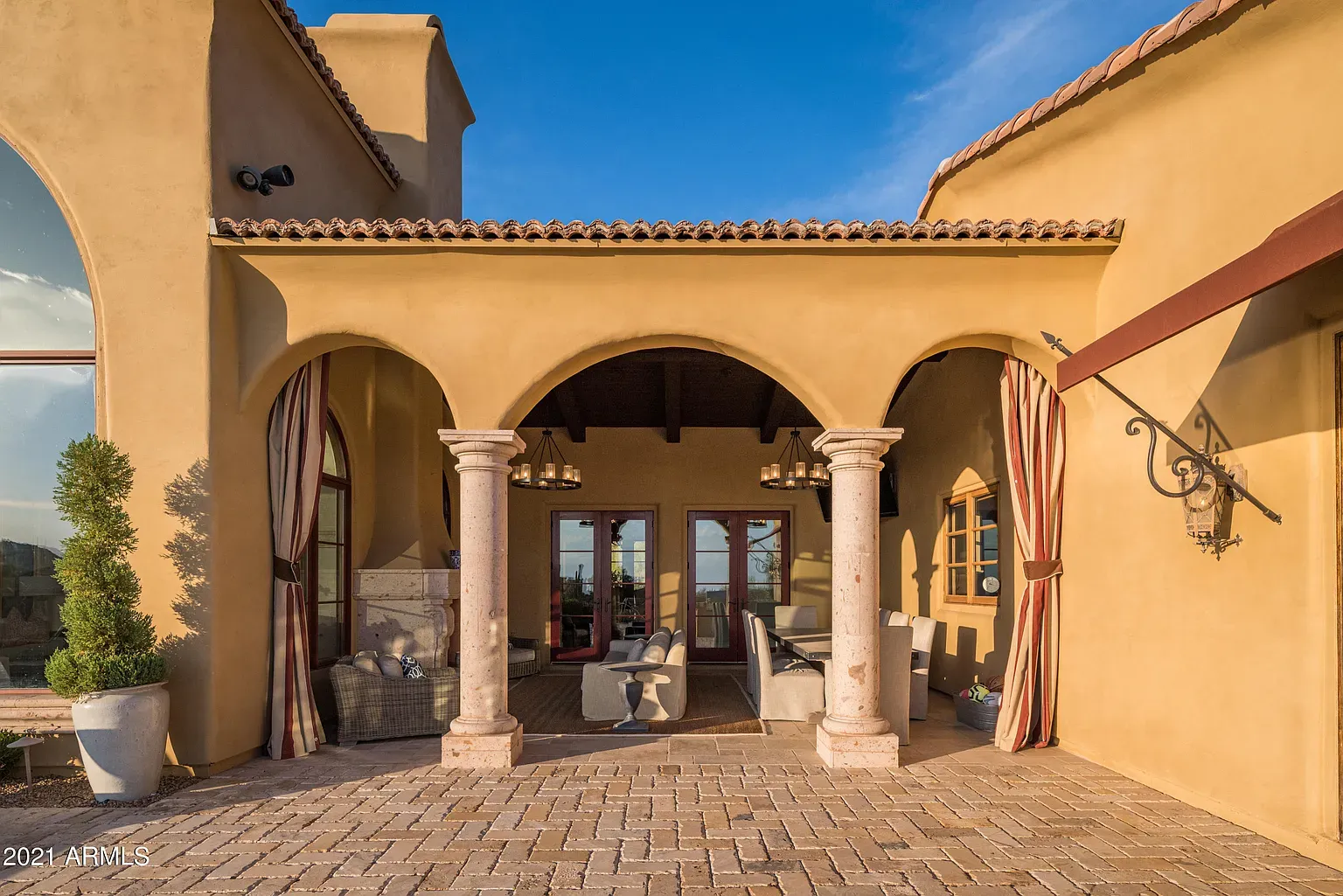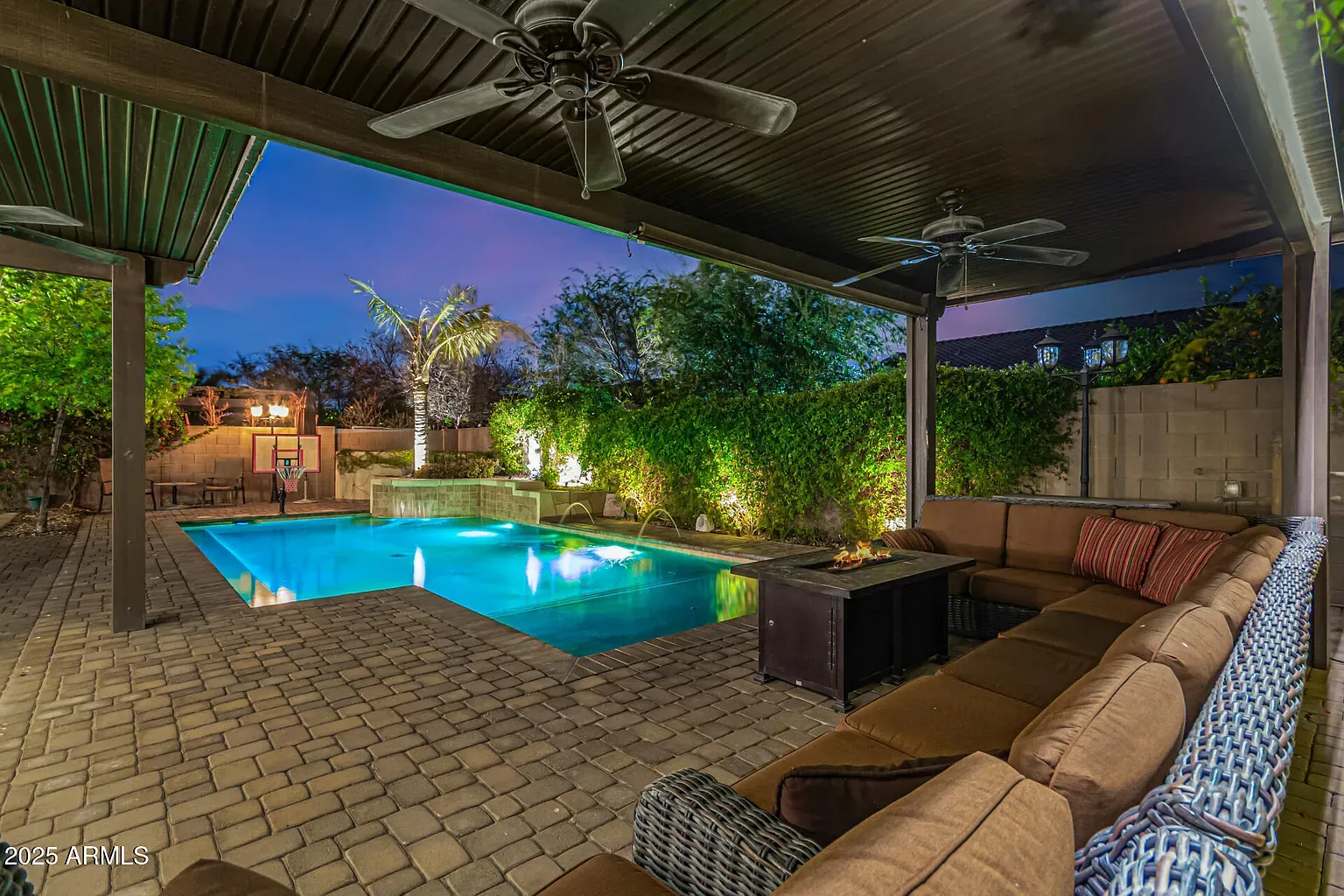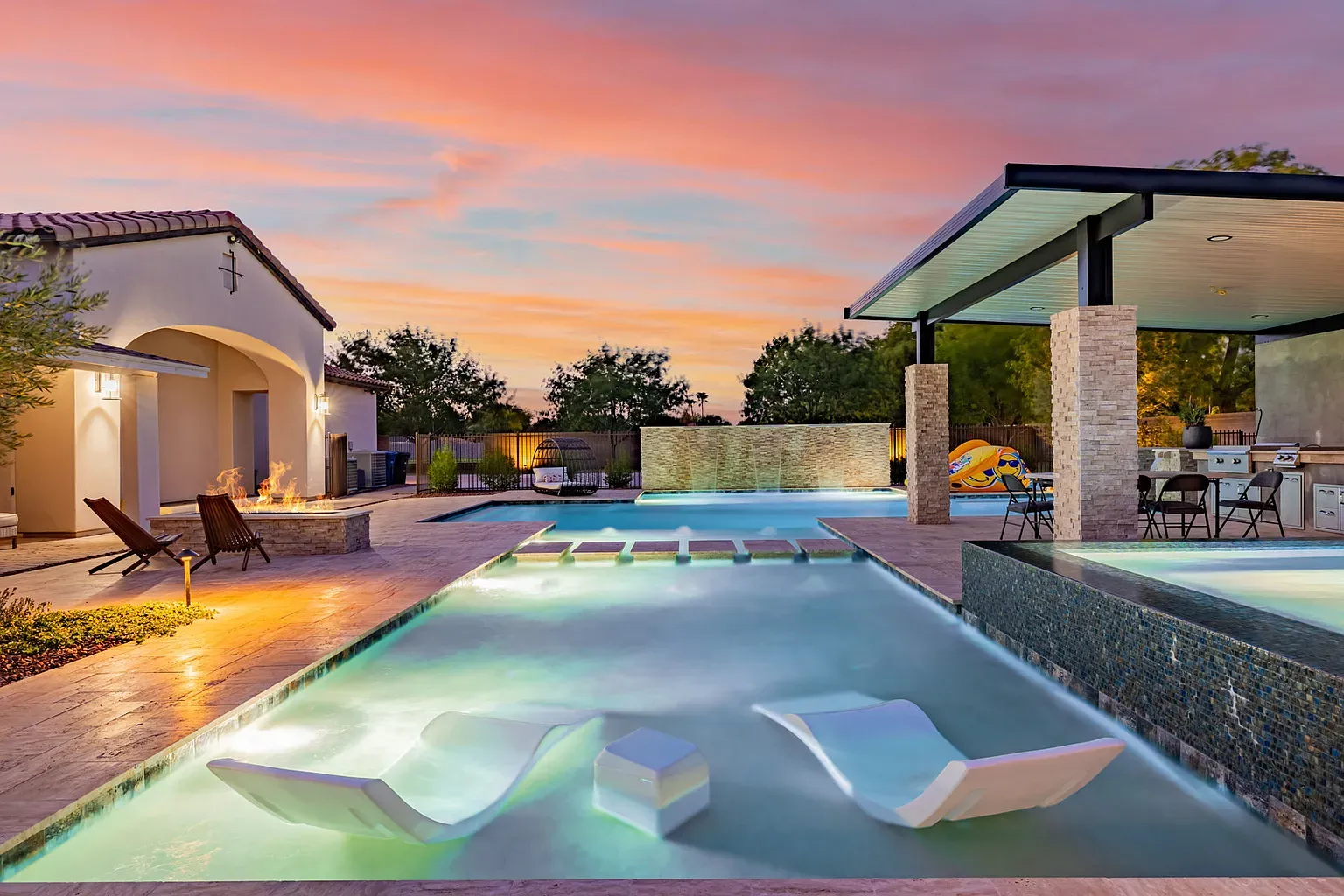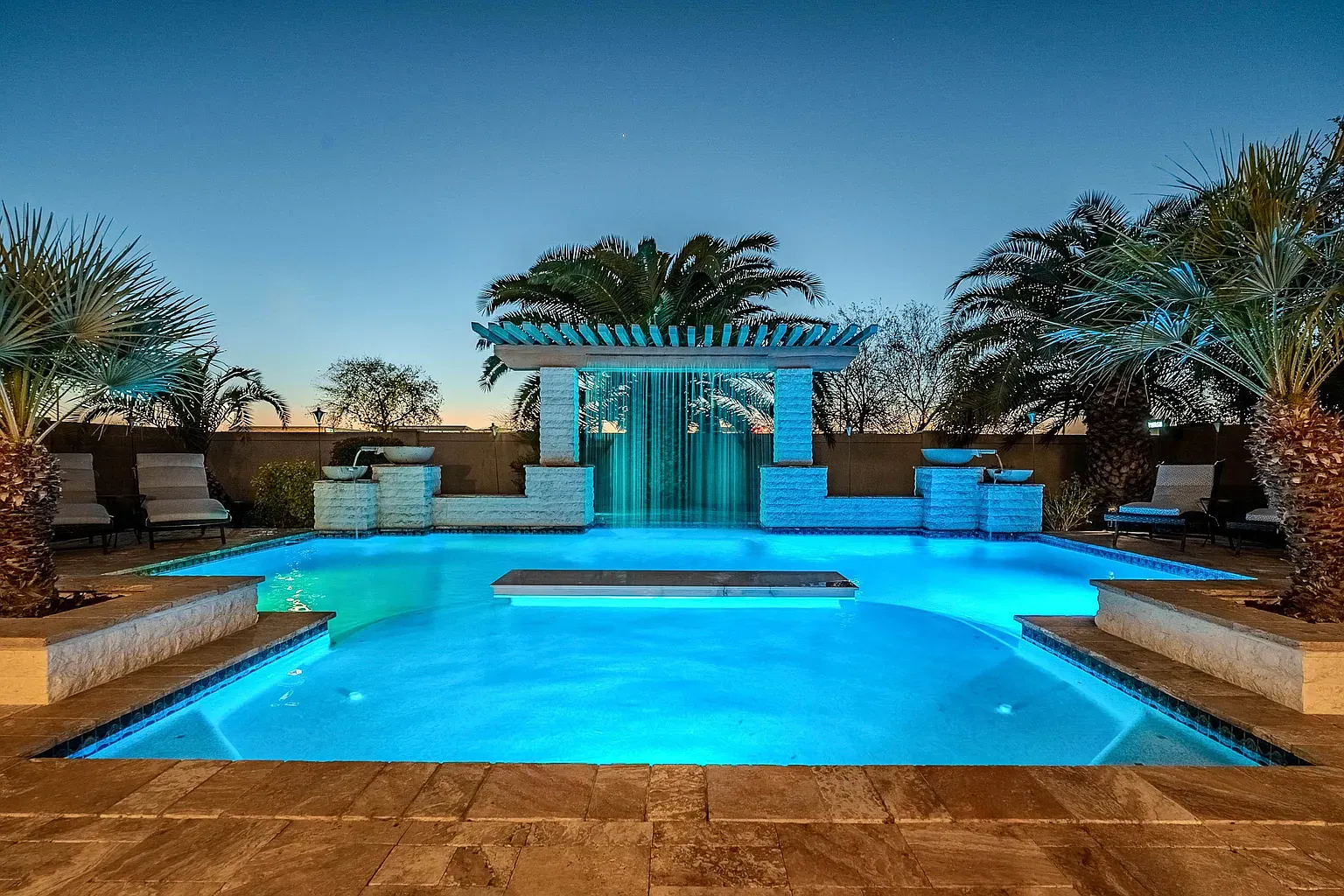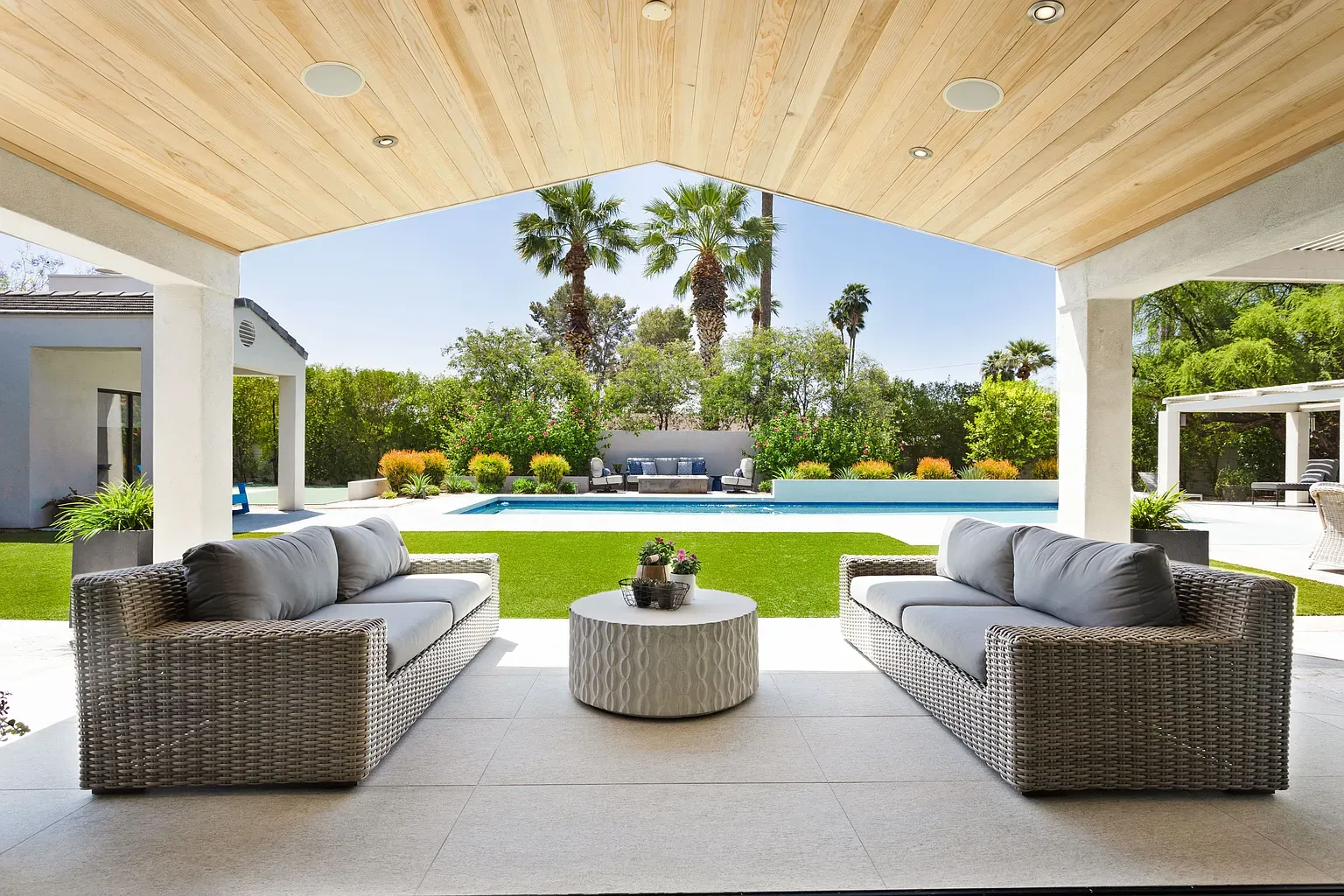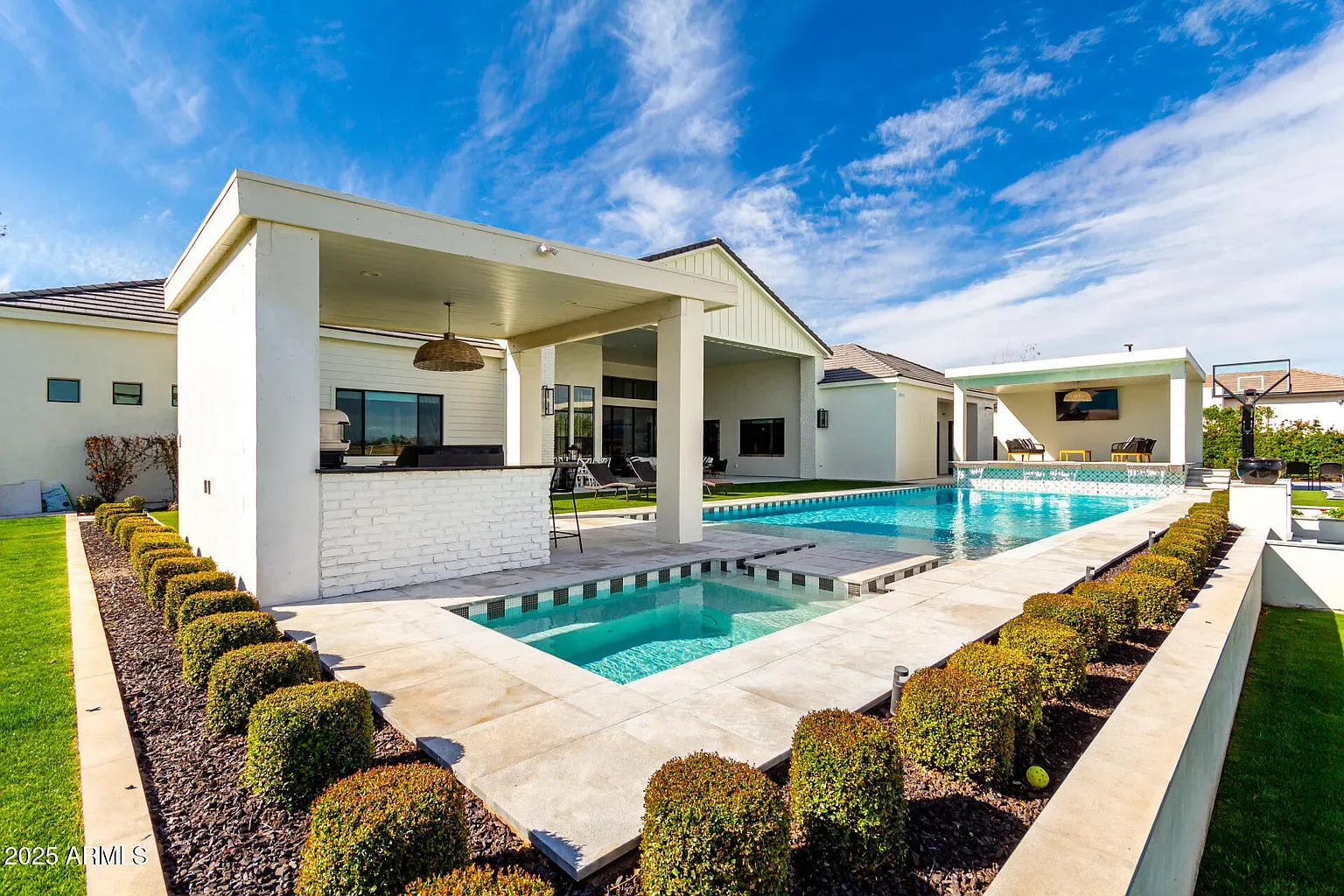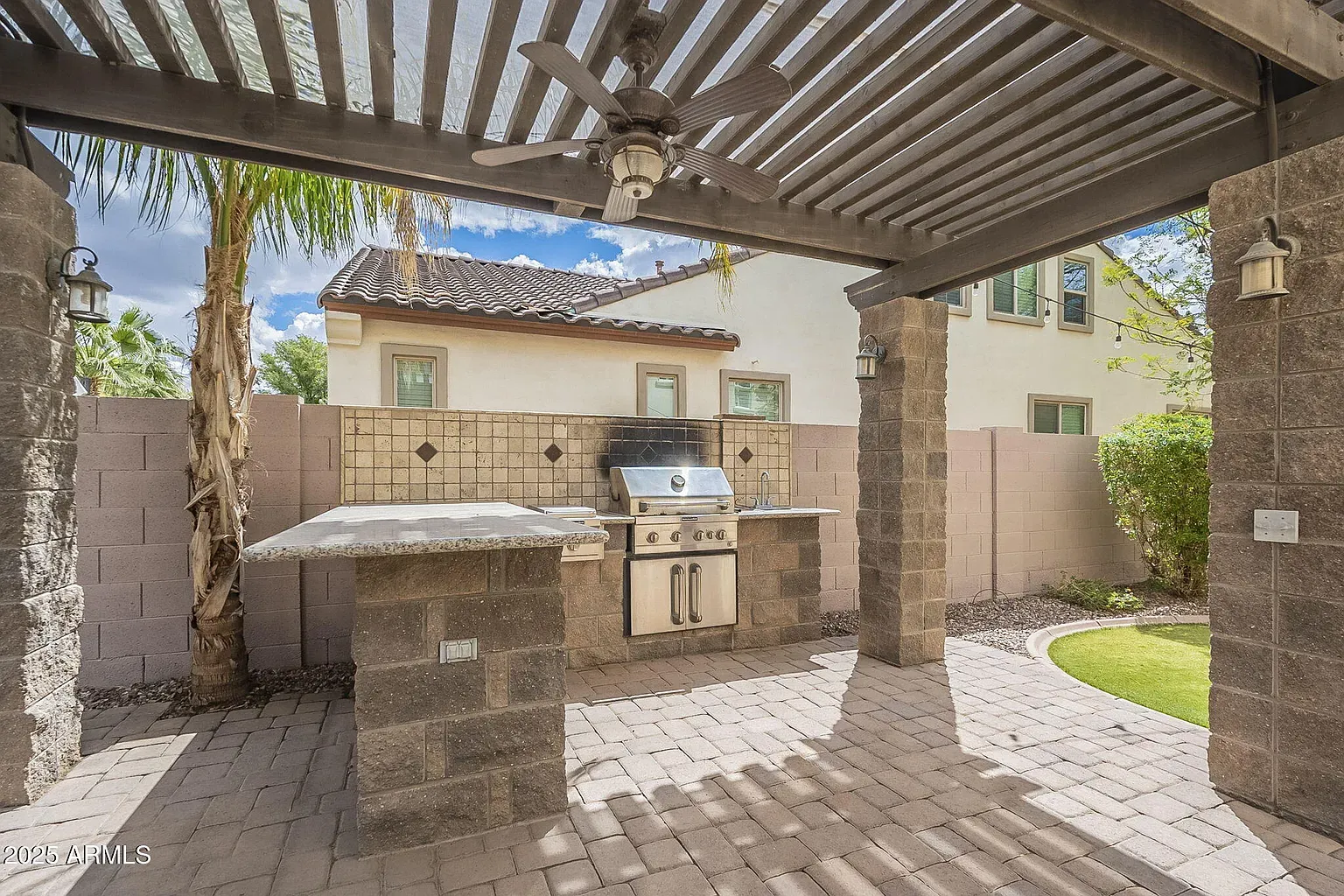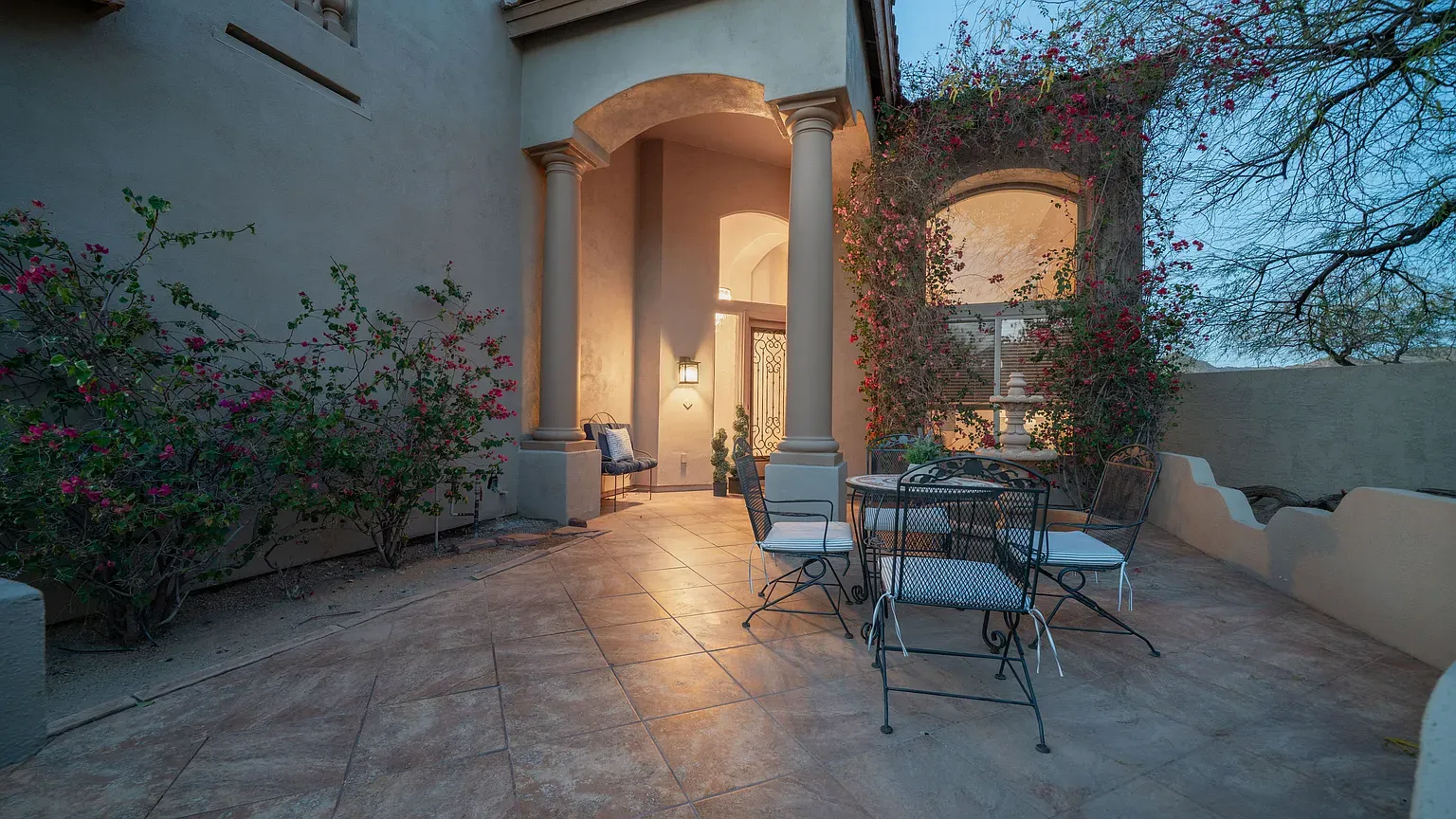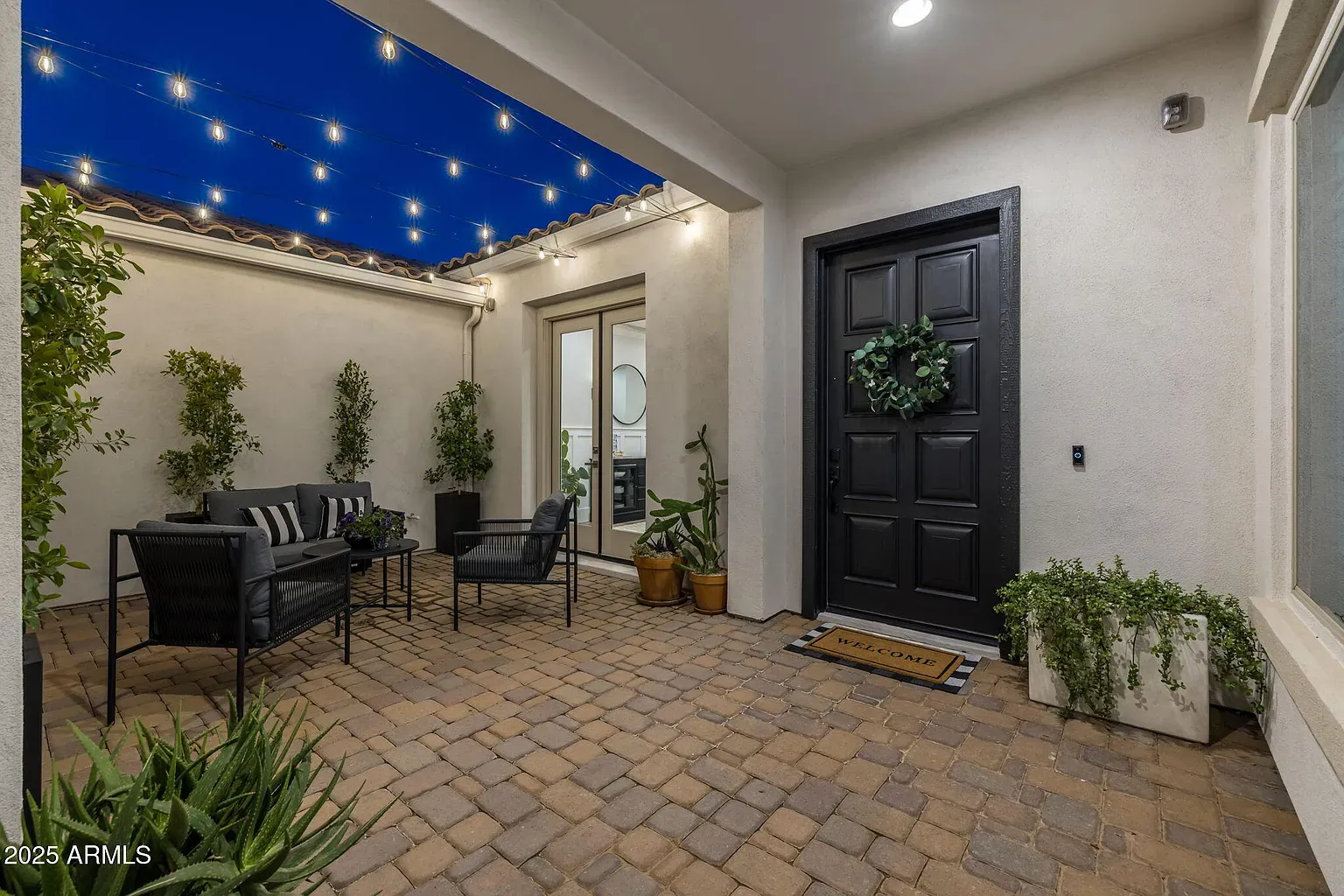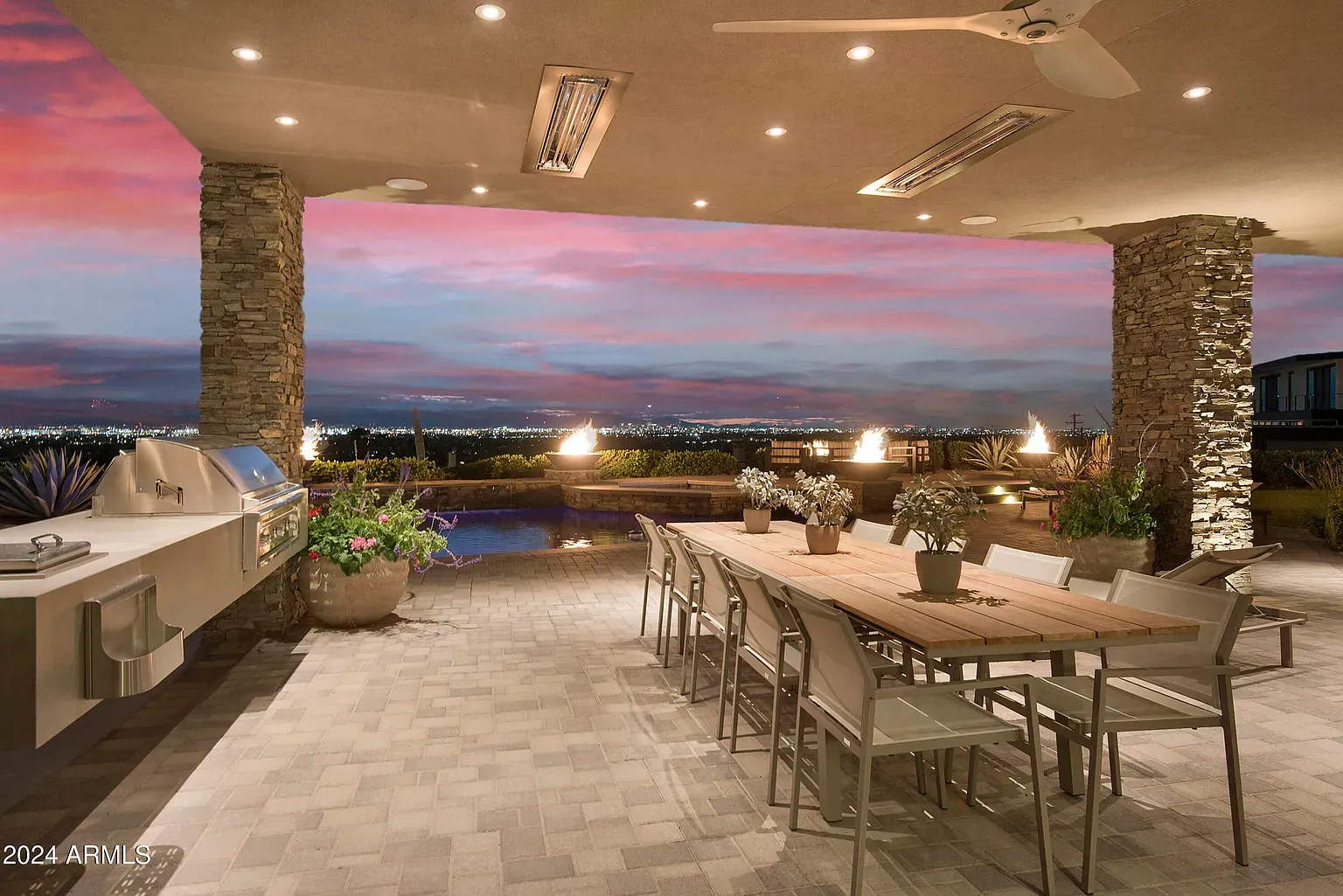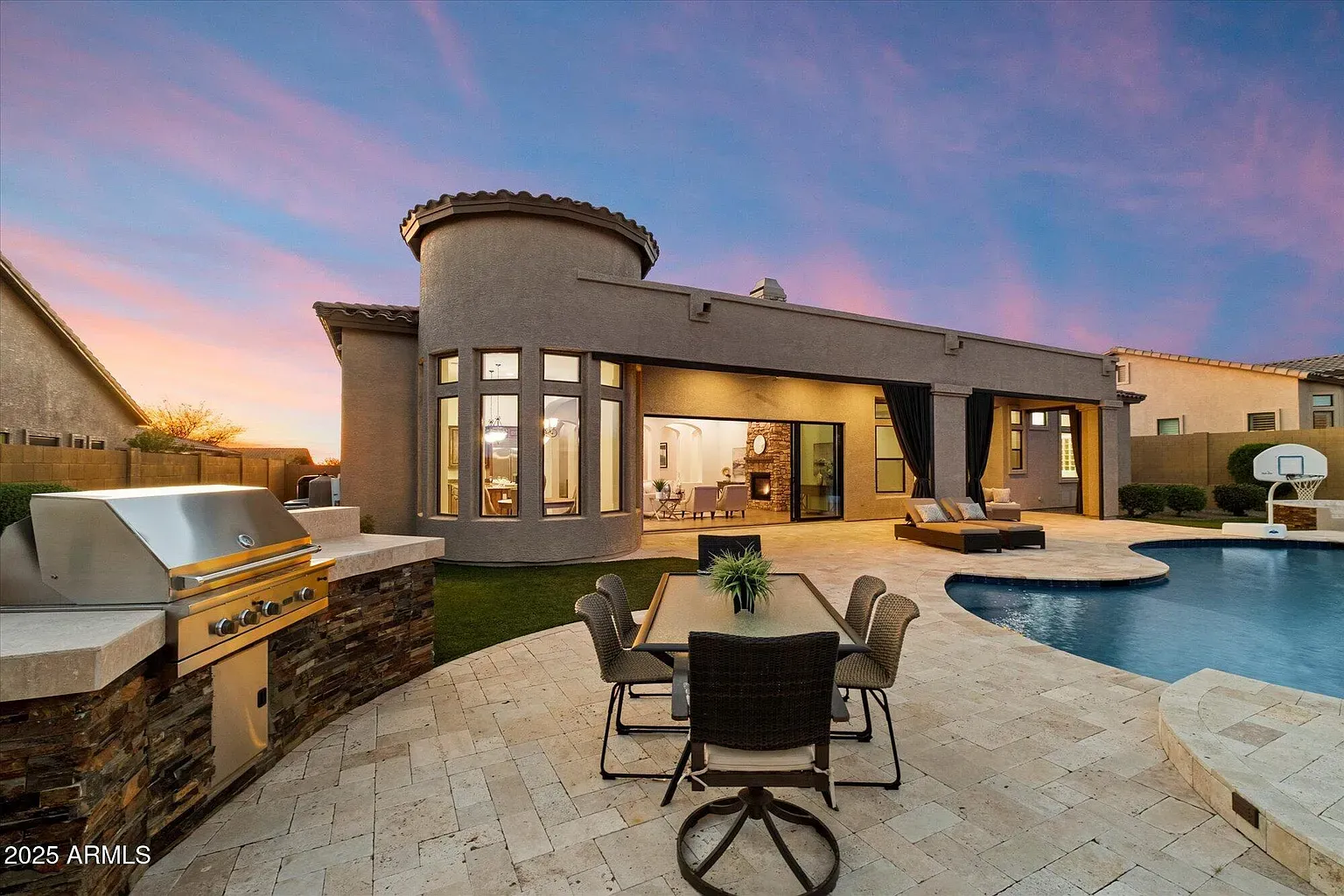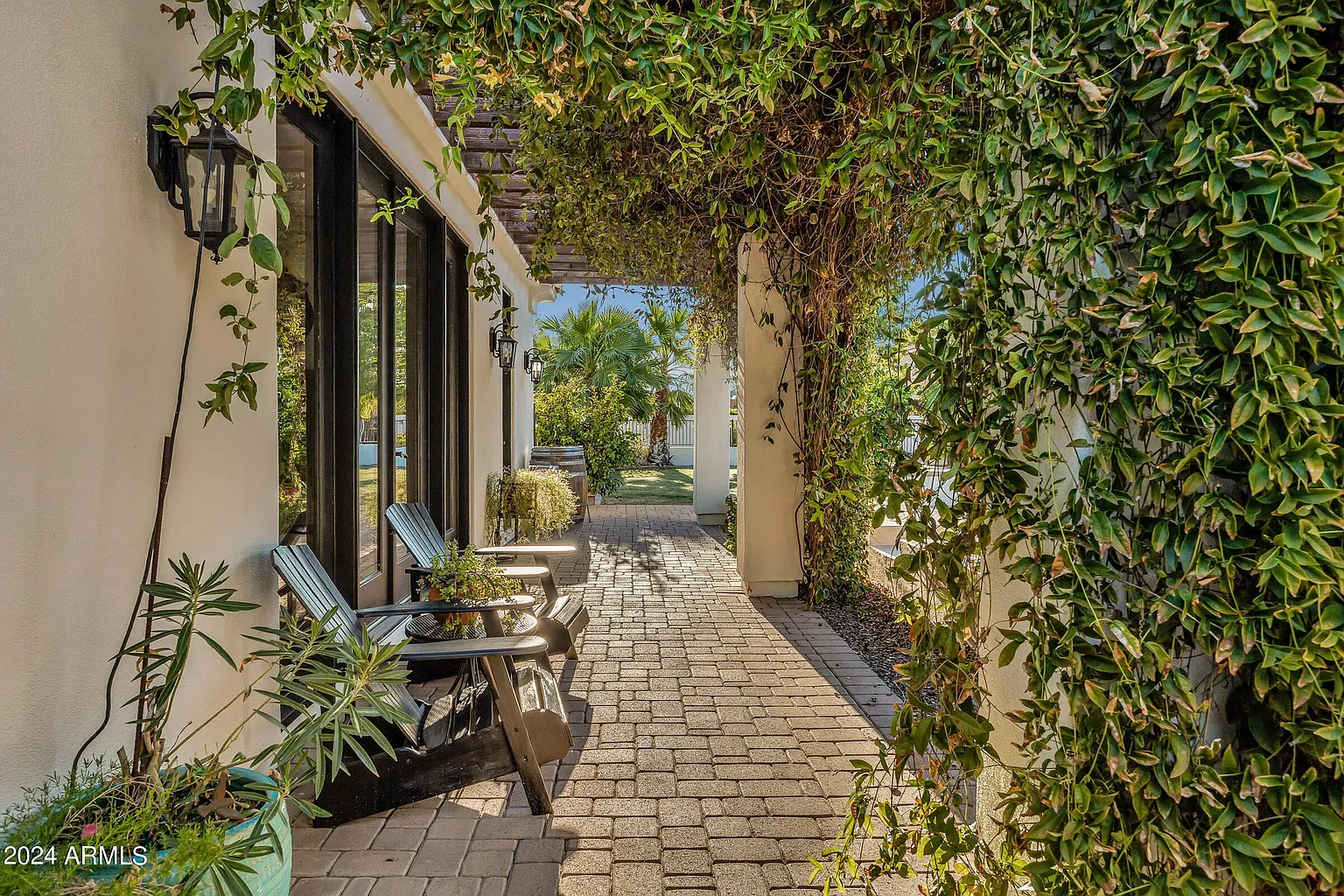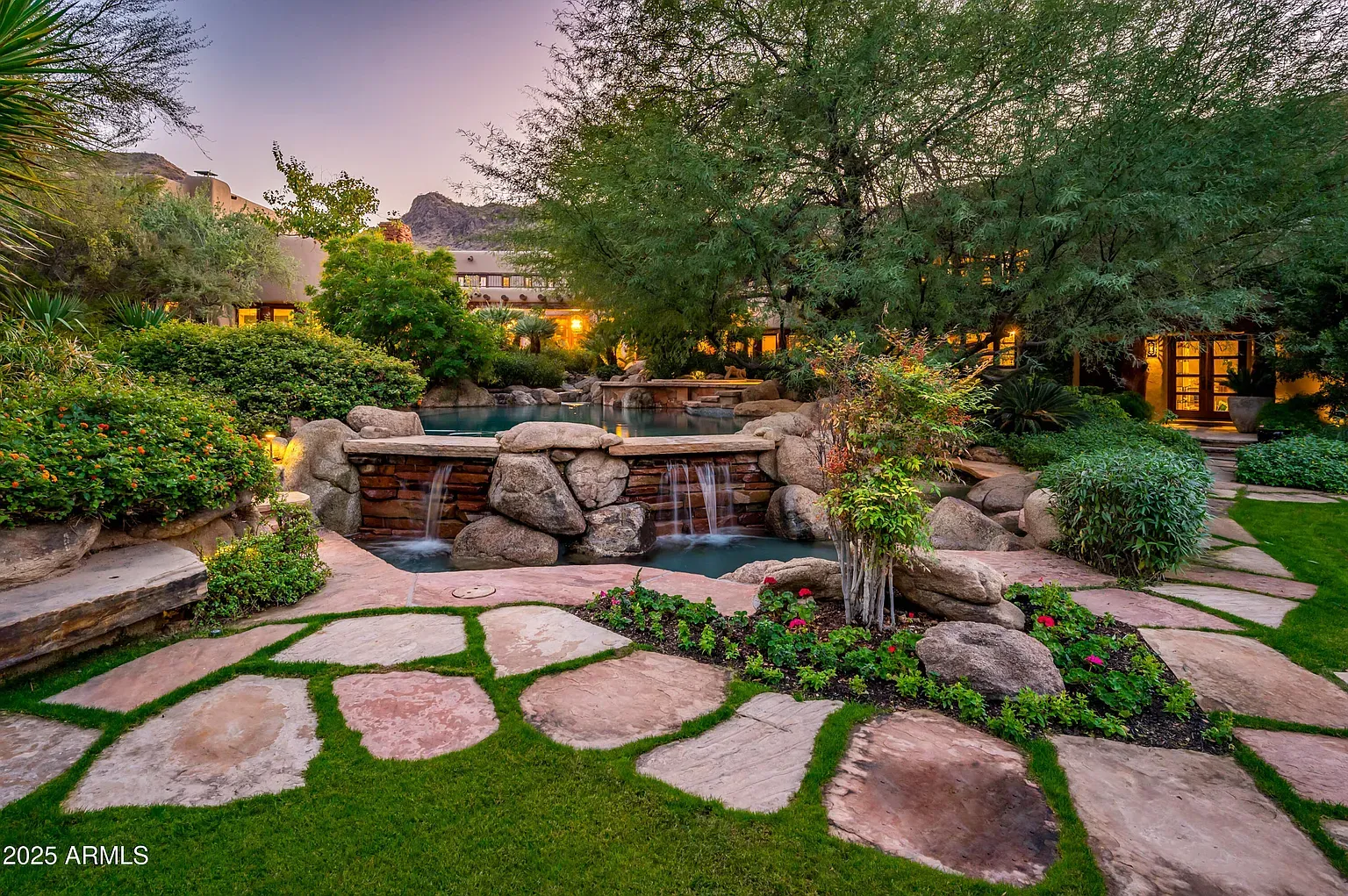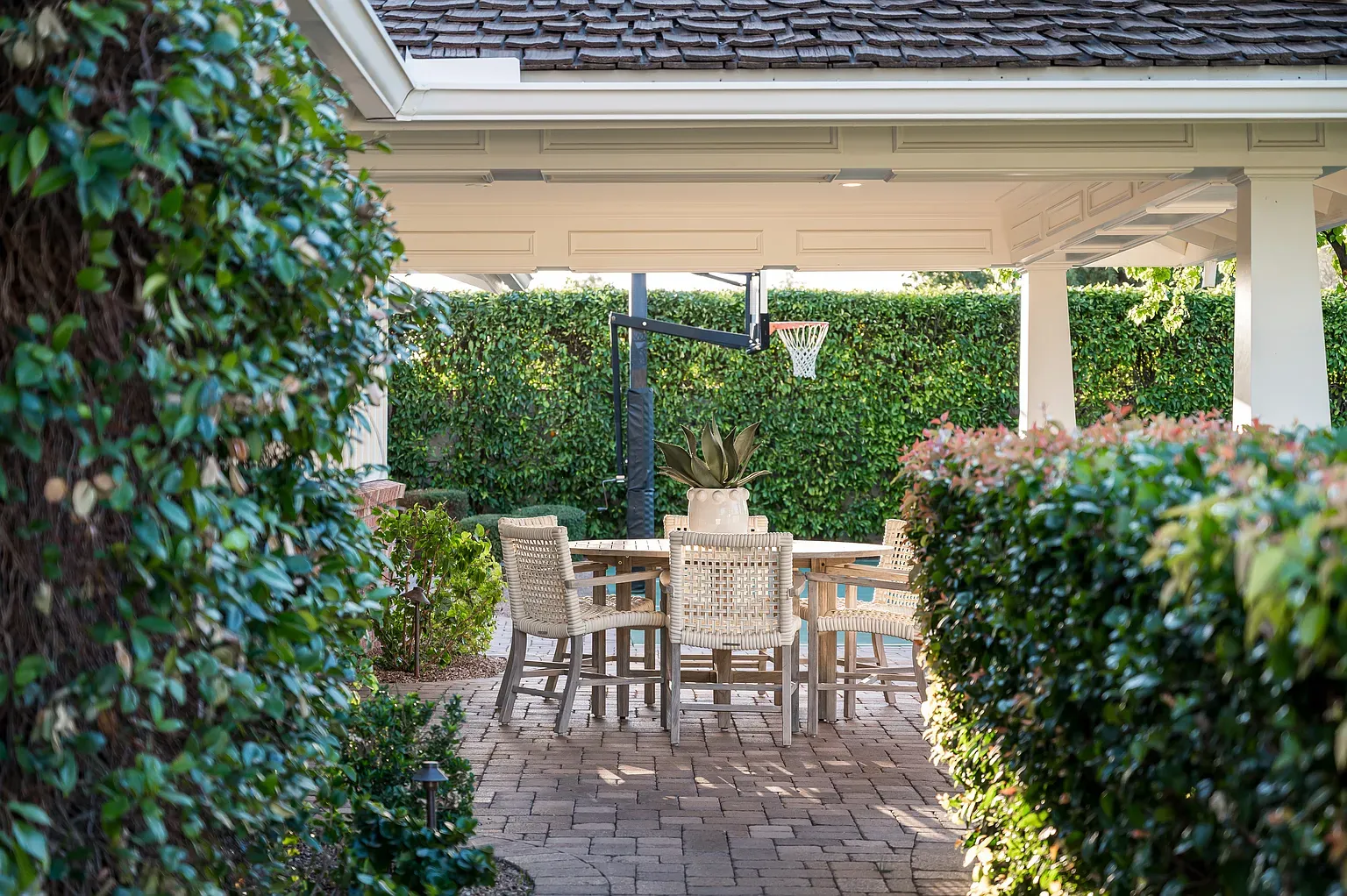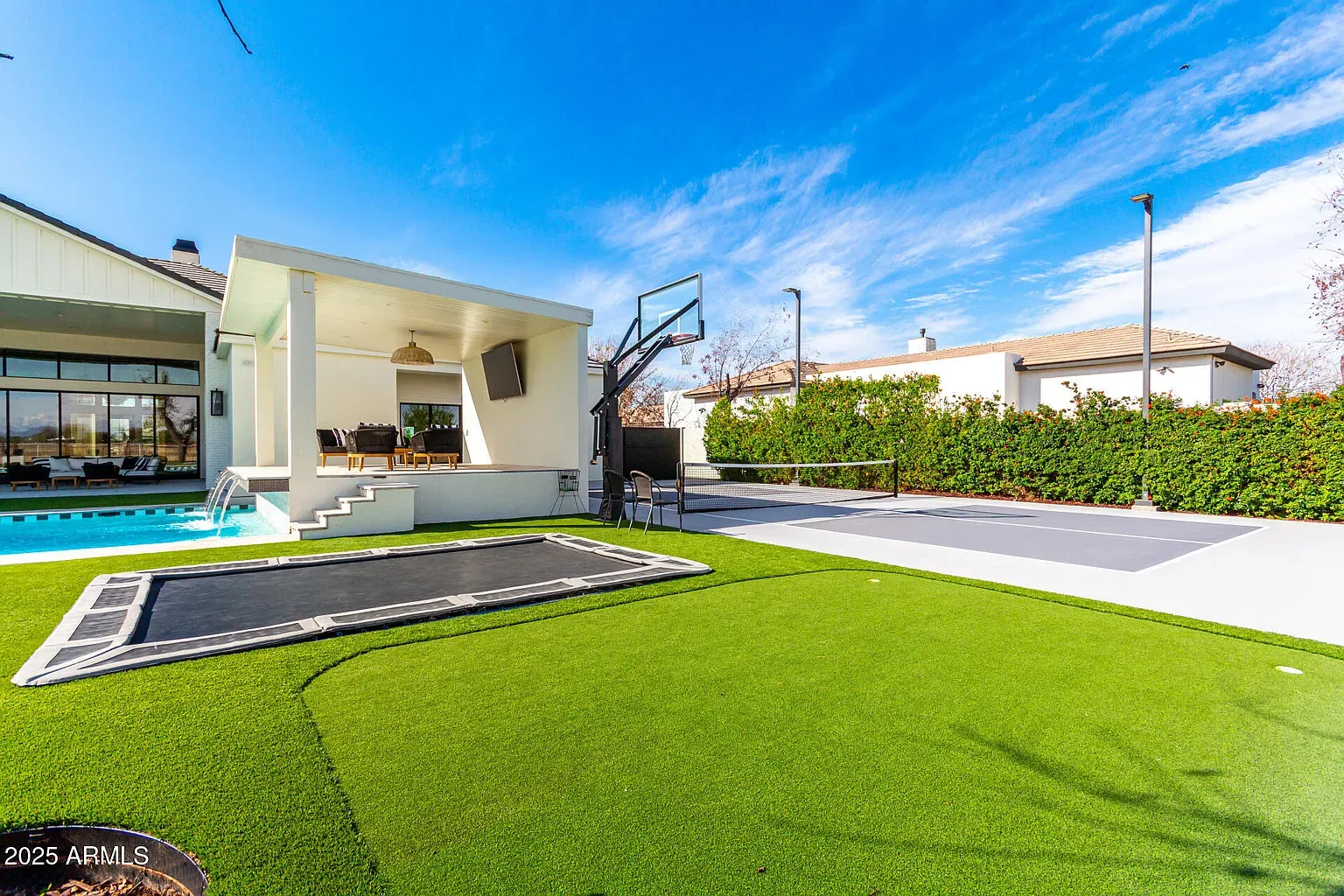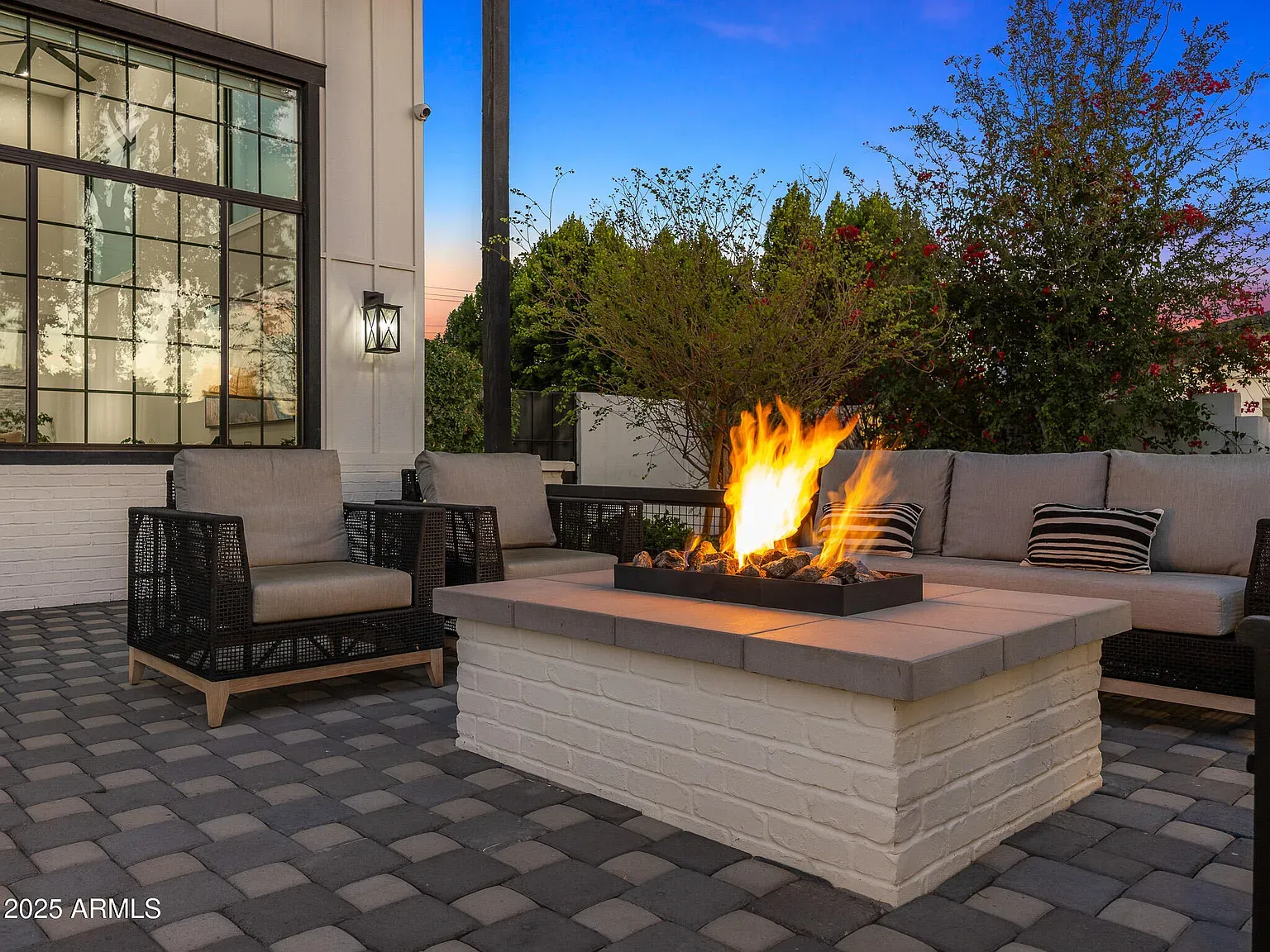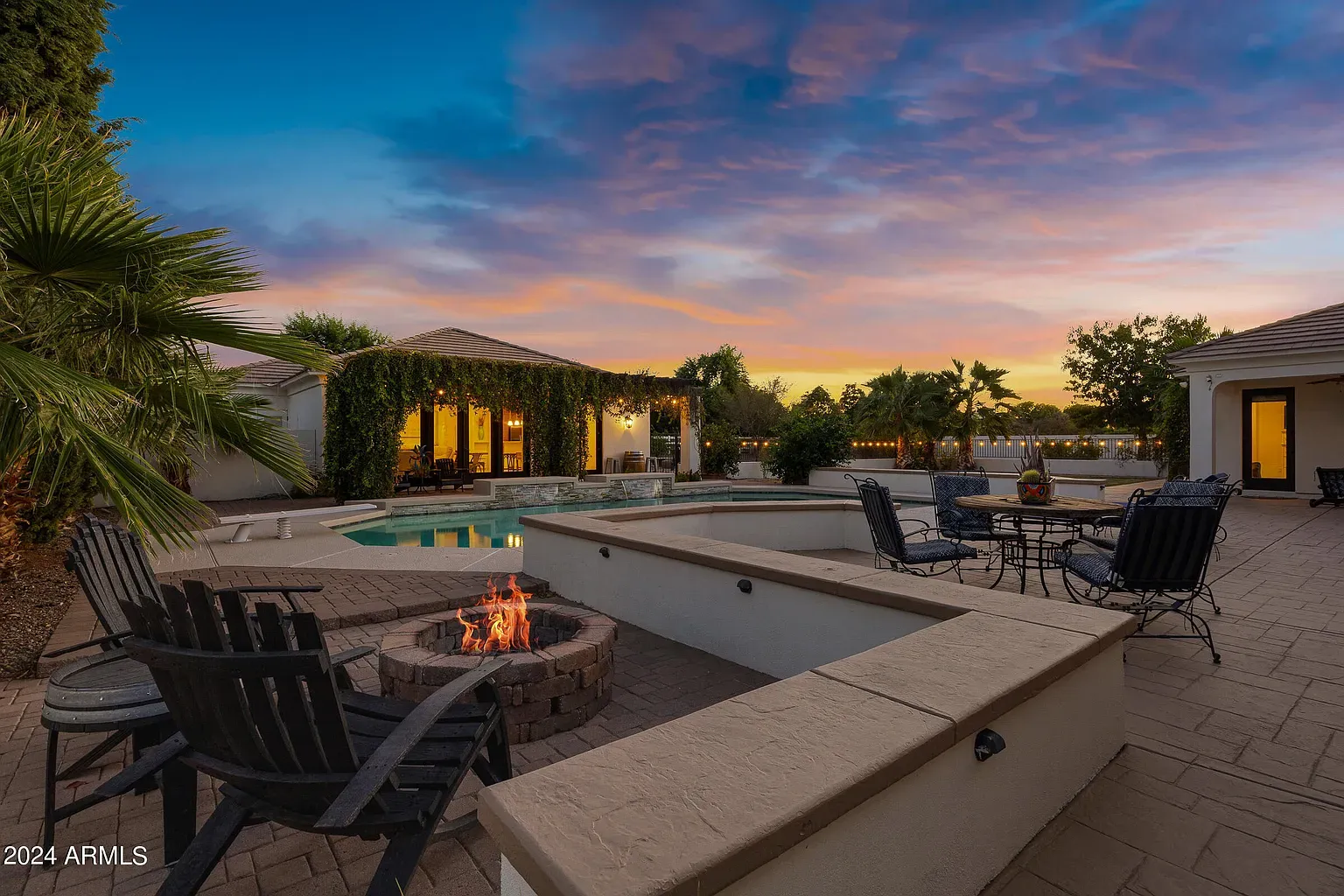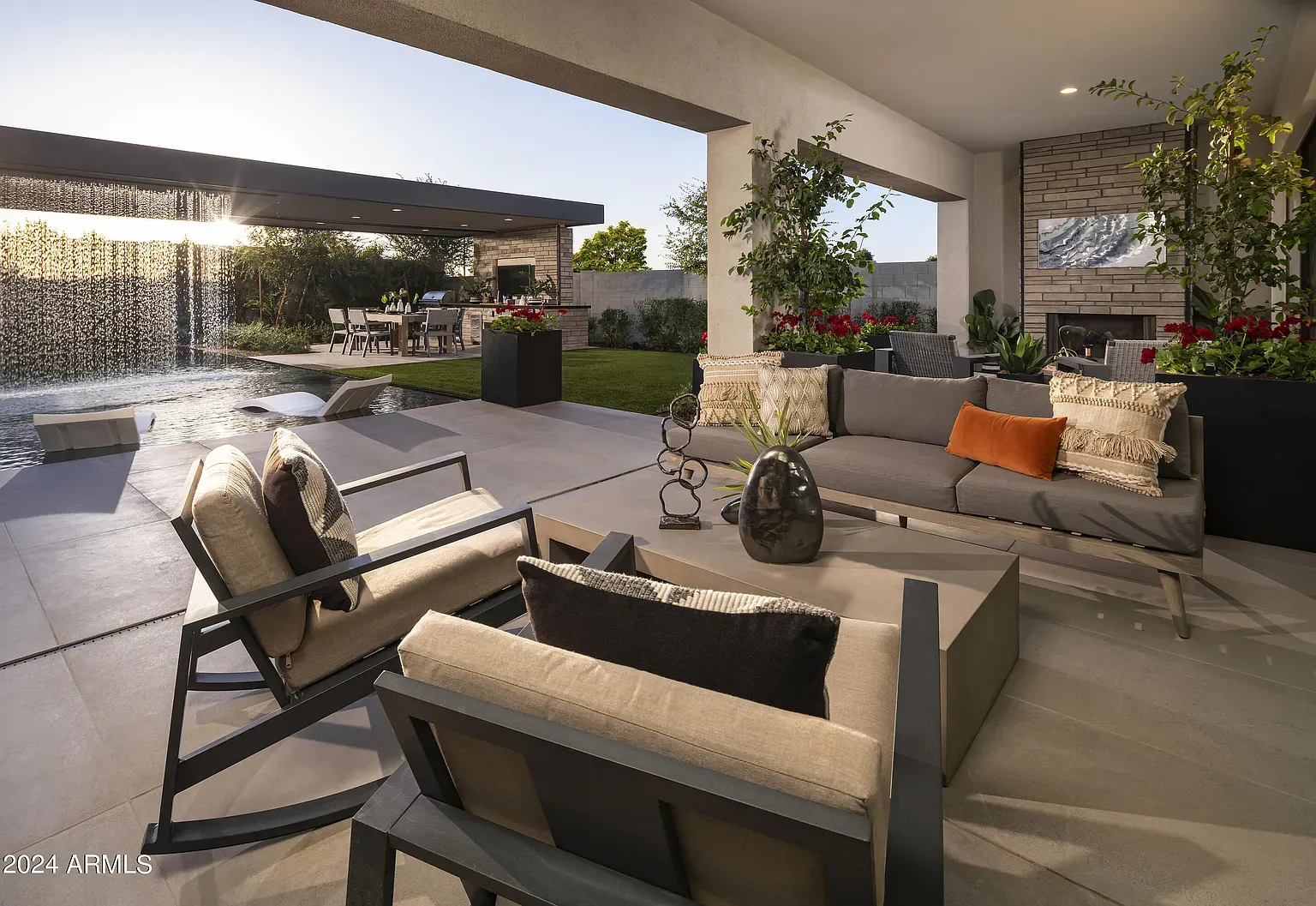Arizona’s unique climate offers homeowners nearly year-round opportunities to enjoy outdoor living spaces. With over 300 days of sunshine annually, designing functional and beautiful outdoor areas isn’t just about enhancing your lifestyle — it’s about extending your home’s living space and increasing its value. Whether you’re renovating an existing space or starting from scratch, this comprehensive guide explores the best outdoor living options for Arizona homes.
Arizona’s climate demands thoughtful design for outdoor spaces. Summer temperatures regularly exceed 100°F in cities like Phoenix and Scottsdale, while winter evenings can dip into the 40s. This climate diversity means outdoor living spaces must be versatile, incorporating shade elements for summer and warmth options for cooler months.
According to a 2023 report by the National Association of Realtors, well-designed outdoor living spaces can recover 65-80% of their cost at resale in the Southwest region, making them both enjoyable and financially sound investments.
Patios and Verands: The Foundation of Outdoor Living
The patio serves as the cornerstone of Arizona outdoor living. When designing a patio, consider these elements:
Materials That Beat the Heat
Arizona’s intense sun demands materials that won’t become unbearably hot:
- Travertine and limestone: These natural stones reflect heat rather than absorb it, staying cooler underfoot.
- Concrete pavers: Available in various colors and patterns, these offer good heat resistance when lighter colors are selected.
- Decorative concrete: Stained or stamped concrete provides durability with aesthetic appeal at a reasonable cost.
Expert Tip: Avoid dark-colored materials like slate or dark pavers. They can reach temperatures exceeding 170°F in July and August, making them virtually unusable during daytime hours.
Coverage Options
A covered patio significantly extends usability during summer months:
- Solid roof extensions: These provide complete shade and rain protection
- Retractable awnings: Offer flexibility for different seasons
- Louvered roof systems: Brands like Equinox and Solara allow adjustable light control
- Shade sails: Modern, affordable, and available in UV-resistant fabrics
Expert Tip: For east and west-facing patios, consider extending roof overhangs at least 6-8 feet. This provides critical shade during morning and afternoon hours when the sun is at its most intense angle.
Pools and Water Features: Desert Oasis
Pools are practically essential for many Arizona homeowners, serving as both recreational spaces and cooling features.
Pool Designs for Arizona Living
Popular options include:
- Play pools: Smaller, shallower pools (typically 4-5 feet deep) that require less water and maintenance
- Lap pools: Narrow, long designs for exercise that use less square footage
- Negative edge pools: Create visual drama on sloped properties
- Diving pools: Require greater depth and space but offer recreational versatility
- Cocktail pools: Small, plunge-style pools with seating ledges, perfect for smaller yards
Water Conservation Features
- Automated covers: Reduce evaporation by up to 95% when the pool isn’t in use
- Efficient filtration systems: Variable-speed pumps use up to 70% less electricity
- Smart water monitoring: Systems from brands like Flume or Hydrawise alert homeowners to potential leaks
Expert Tip: Install an auto-fill device with a flow meter. Arizona’s dry air can evaporate a quarter-inch of water daily from uncovered pools during summer months. Auto-fill systems maintain proper water levels while tracking consumption, helping identify potential leaks before they become costly problems.
Gazebos and Pergolas: Architectural Shade Solutions
Shade structures provide necessary relief from Arizona’s intense sun while adding architectural interest to outdoor spaces.
Gazebos
Fully-roofed structures offering complete protection:
- Aluminum gazebos: Lightweight, rust-resistant options ideal for Arizona’s climate
- Traditional wooden gazebos: Require more maintenance but offer classic aesthetics
- Fabric-topped gazebos: More affordable but need replacement every 3-5 years due to UV damage
Pergolas
Open-roof structures that provide filtered shade:
- Aluminum pergolas: Minimal maintenance with modern appeal
- Wooden pergolas: Often cedar or redwood for natural resistance to Arizona’s dry conditions
- Louvered pergolas: Adjustable slats for customizable shade control
Expert Tip: In Arizona, position gazebos and pergolas to maximize morning sun and afternoon shade. For wooden structures, use a penetrating sealer with UV protection twice annually to prevent cracking and fading. Aluminum structures should have powder-coated finishes certified for extreme UV exposure.
Courtyards and Entryways: First Impression
Courtyards are deeply rooted in Arizona’s architectural history, drawing inspiration from Spanish Colonial and Mexican hacienda designs.
Courtyard Features
- Entry courtyards: Create transitional spaces between public and private areas
- Interior courtyards: Provide private outdoor rooms surrounded by the home
- Courtyard walls: Offer privacy and wind protection while defining space
- Paving patterns: Add visual interest through traditional designs or modern interpretations
Courtyards work exceptionally well in Arizona because they create microclimates. The surrounding walls provide shade during different parts of the day and block desert winds, making them usable even during seasons when open yards might be too exposed.
Expert Tip: Incorporate at least one water feature in a courtyard, even if it’s small. In Arizona’s dry climate, the sound of water provides psychological cooling and masks neighborhood noise. Even a simple wall fountain requires minimal water thanks to recirculating pumps and can reduce ambient temperature by 5-10 degrees through evaporative cooling.
Outdoor Kitchens: Al Fresco Entertaining
Outdoor kitchens rank among the most desired features in Arizona homes, allowing cooking without heating indoor spaces during summer months.
Design Considerations
- Positioning: North or east-facing locations avoid afternoon sun exposure
- Overhead coverage: Essential for comfort during summer use
- Counter materials: Durable options like granite, quartzite, or porcelain that resist UV damage
- Storage: Weather-resistant cabinetry with sealed compartments
Popular Elements
- Built-in grills: High-BTU models from manufacturers like DCS, Lynx, or Alfresco
- Pizza ovens: Wood-fired or gas options for authentic outdoor cooking
- Refrigeration: Outdoor-rated undercounter refrigerators and ice makers
- Sink stations: Simplify cleanup and food preparation
- Bar seating: Creates social interaction between cook and guests
Expert Tip: In Arizona’s climate, add at least one cooling element to outdoor kitchen designs. Ceiling fans alone aren’t sufficient in summer. Consider high-pressure misting systems installed at pergola height or evaporative coolers specifically designed for outdoor spaces. These can decrease ambient temperatures by 15-20 degrees during the hottest months, extending your outdoor kitchen’s usability from March through November.
Desert Gardens and Landscapes
Arizona gardens require appropriate plant selection and thoughtful design to thrive with minimal water.
Xeriscaping Principles
- Zoned plantings: Group plants with similar water needs
- Limited turf areas: Replace extensive lawns with water-efficient alternatives
- Efficient irrigation: Drip systems deliver water directly to plant roots
- Mulching: Reduces evaporation and soil temperature
Plant Selection
- Native trees: Palo verde, mesquite, and desert willow provide natural shade
- Accent plants: Agave, ocotillo, and barrel cactus add Southwest character
- Flowering perennials: Lantana, penstemons, and desert marigold offer color with minimal water
- Container gardens: Allow for seasonal flexibility and focal points
Expert Tip: Install a ‘smart’ irrigation controller that connects to local weather stations via WiFi, automatically adjusting watering schedules based on actual conditions. These systems, like those from Rachio or Hunter, typically pay for themselves within a year through water savings, especially important in areas like Scottsdale or Mesa where water prices continue to rise.
Play Areas for Arizona Families
Creating safe outdoor play spaces in Arizona requires special attention to heat and sun exposure.
Playground Surfaces
- Artificial turf: Stays cooler than rubber surfaces with proper infill
- Engineered wood fiber: Natural material that doesn’t retain extreme heat
- Shaded play areas: Essential for equipment that might otherwise become too hot to touch
Expert Tip: For playground equipment in Arizona, avoid metal slides and opt for rotationally molded plastic components in light colors. Metal can reach temperatures that cause burns within seconds during summer months. Always install commercial-grade shade structures over play areas, positioning them to provide coverage during 10 AM to 4 PM when UV exposure is highest.
Fire Features: Extending Evening Enjoyment
Fire features extend the usability of outdoor spaces during cooler Arizona evenings from November through March.
Popular Options
- Fire pits: Portable or built-in designs create gathering points
- Outdoor fireplaces: Make dramatic focal points while providing more directed heat
- Fire tables: Combine functionality with ambiance
- Fire bowls: Artistic elements that add visual interest
Expert Tip: In Arizona, consider dual-fuel fire features that can run on either natural gas or propane. During winter months when natural gas demand spikes, utility companies sometimes request reduced consumption. Having propane backup ensures continuous enjoyment. Also, remember that masonry fireplaces should be constructed with materials that withstand extreme temperature fluctuations between day and night that are common in desert environments.
Creating Your Personal Arizona Retreat
Arizona’s climate presents both challenges and opportunities for outdoor living spaces. With thoughtful design focused on shade, cooling elements, and appropriate materials, you can create functional outdoor areas enjoyable throughout most of the year. The key is balancing aesthetics with practical considerations specific to our desert environment.
Whether you’re considering a complete backyard transformation or enhancing existing features, professional guidance can ensure your project addresses Arizona’s unique climate considerations while reflecting your personal style. Companies like 123 Remodeling AZ specialize in designing outdoor living spaces specifically for Arizona homes, helping homeowners navigate material selections, space planning, and integration of cooling features.
By investing in well-designed outdoor living spaces, you’re not just enhancing your lifestyle — you’re increasing your home’s value and creating personal retreats that let you enjoy Arizona’s natural beauty year-round.

